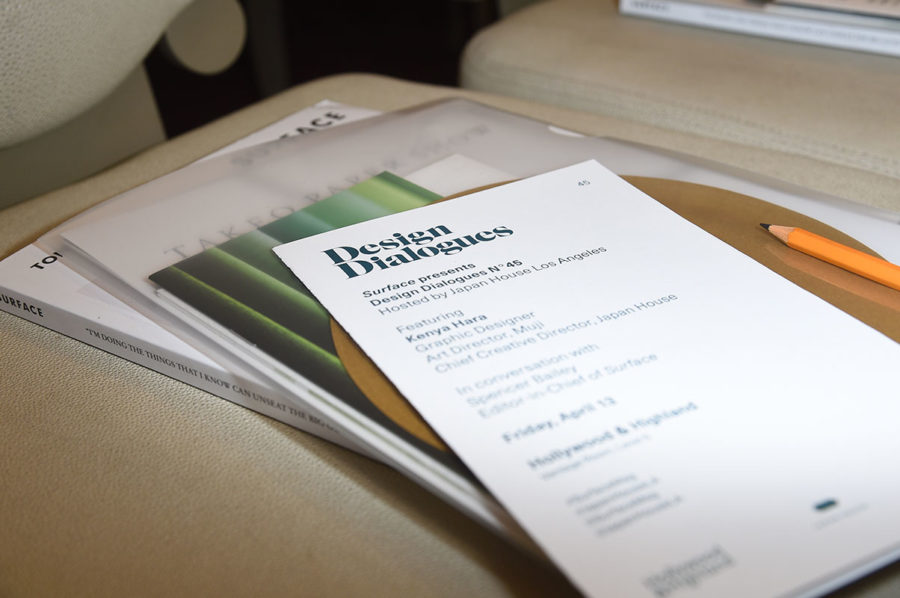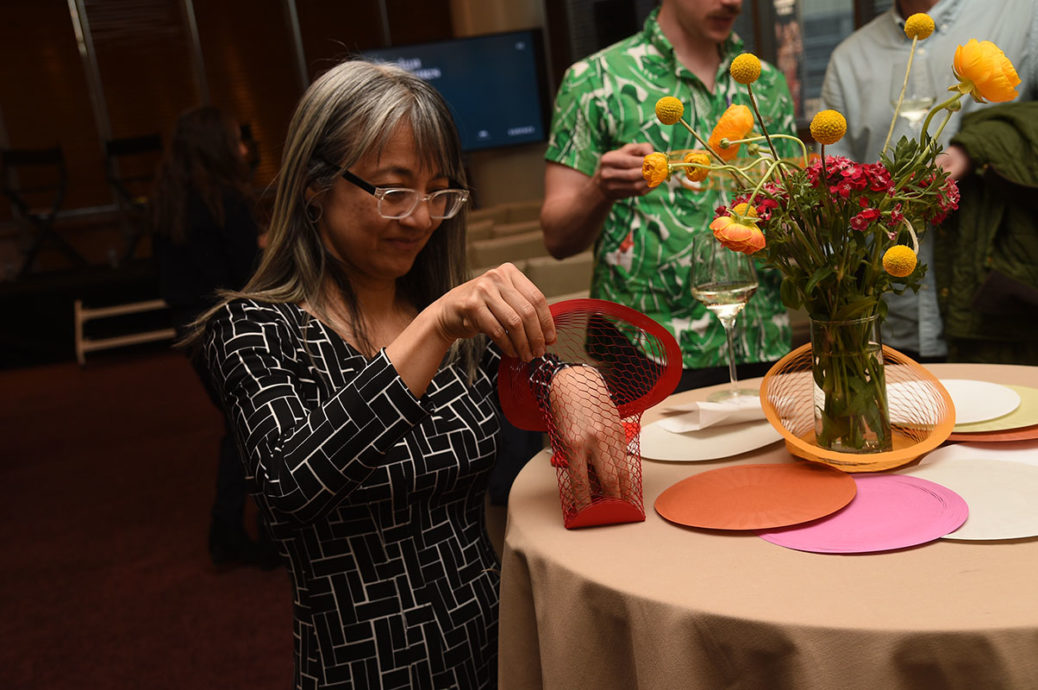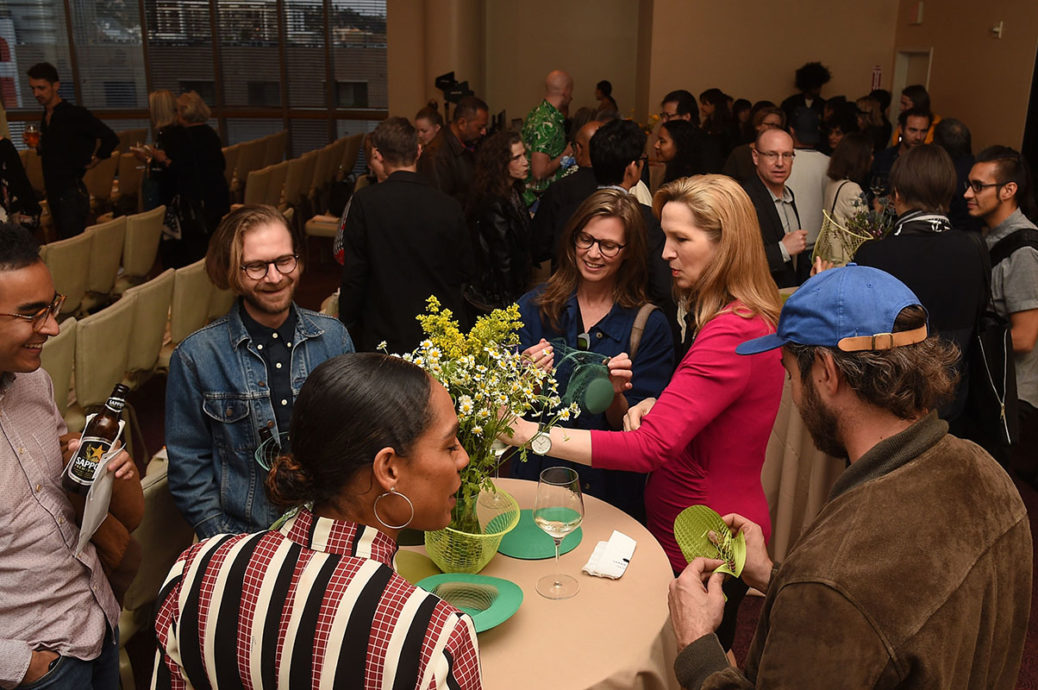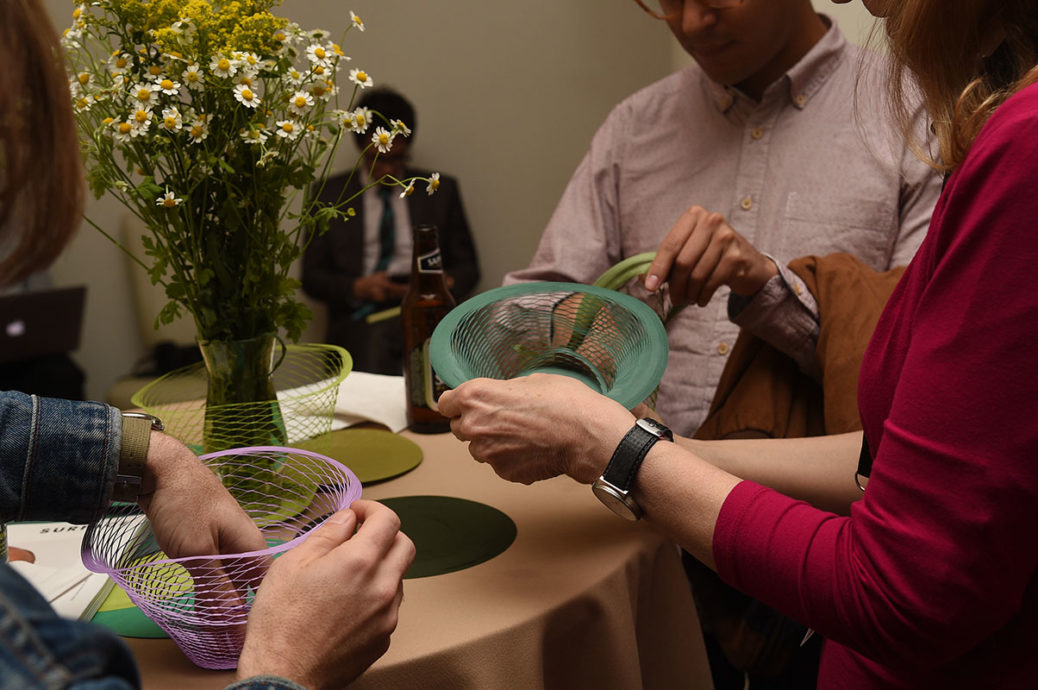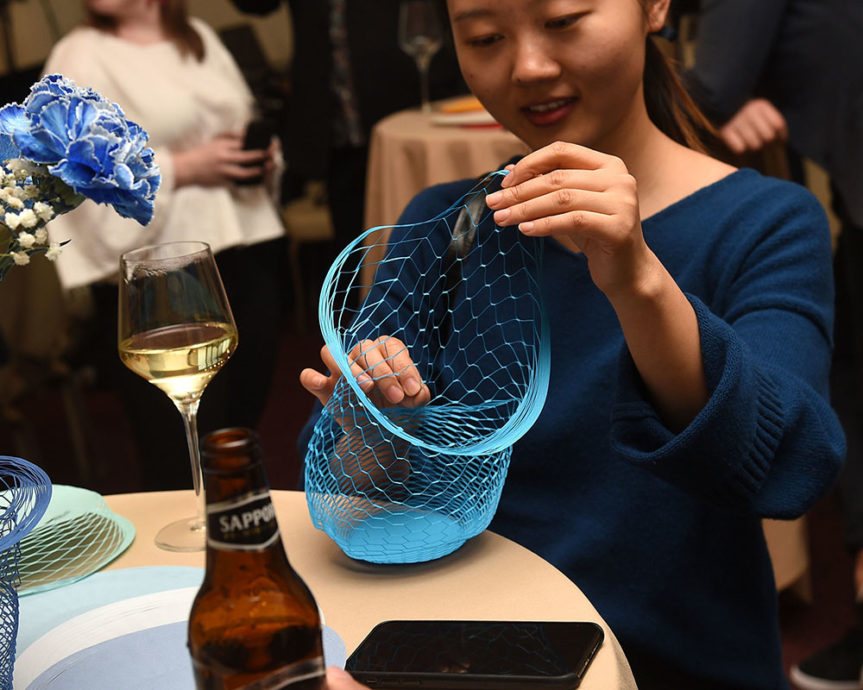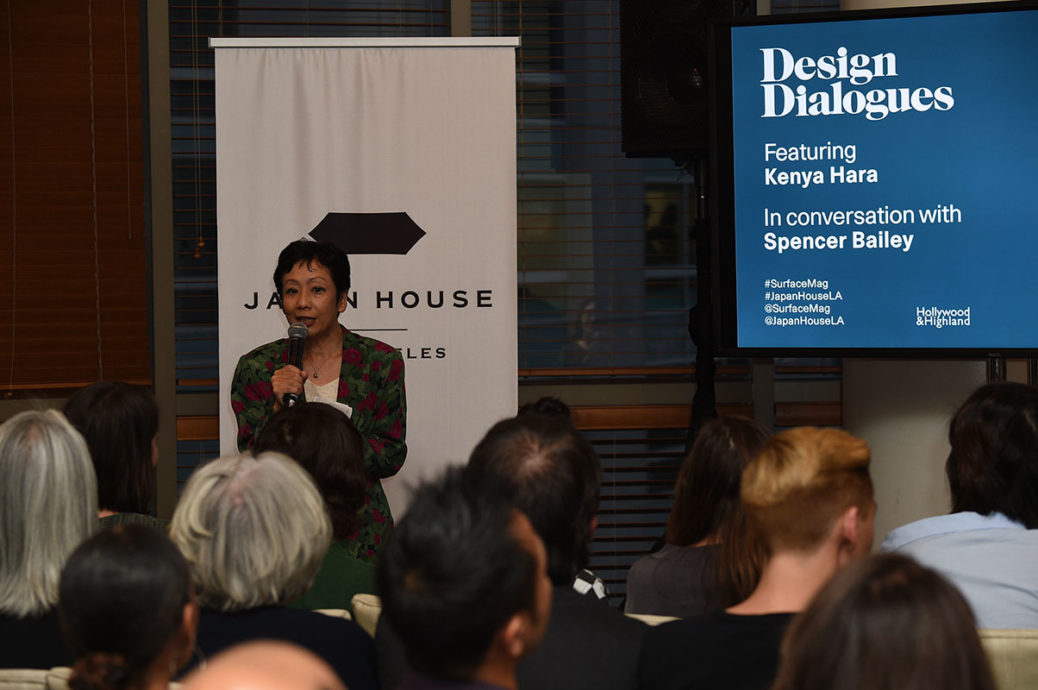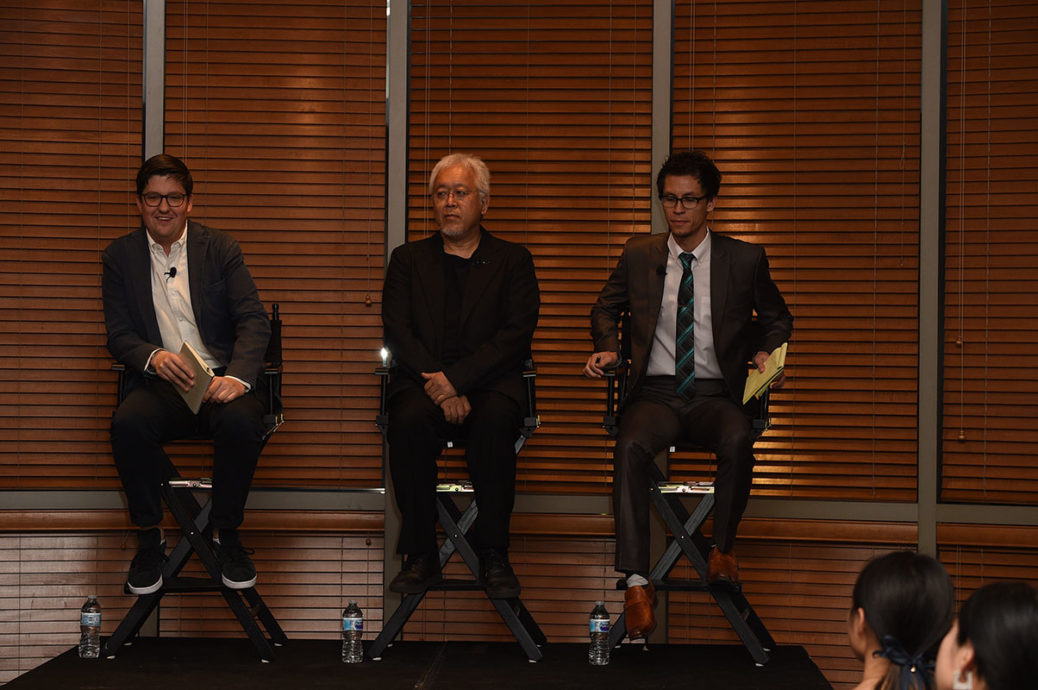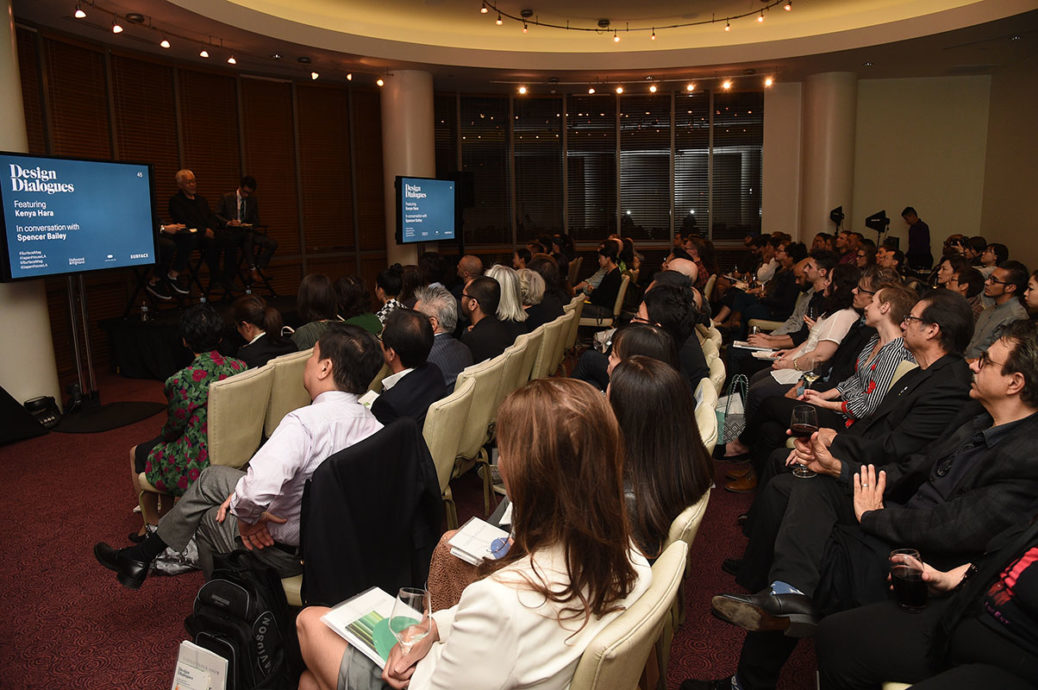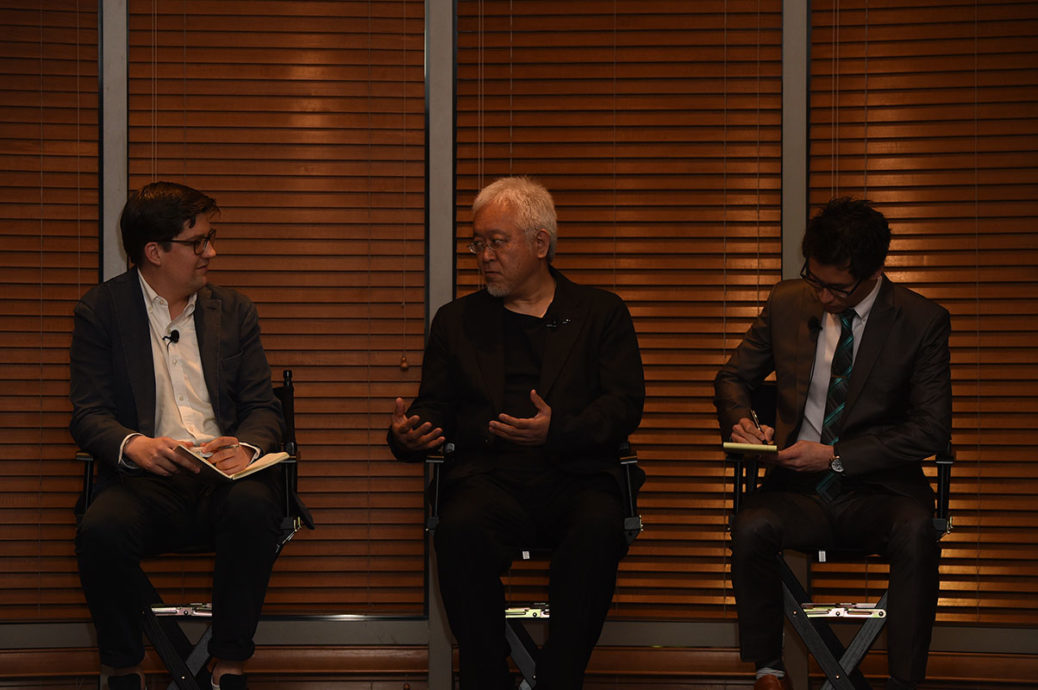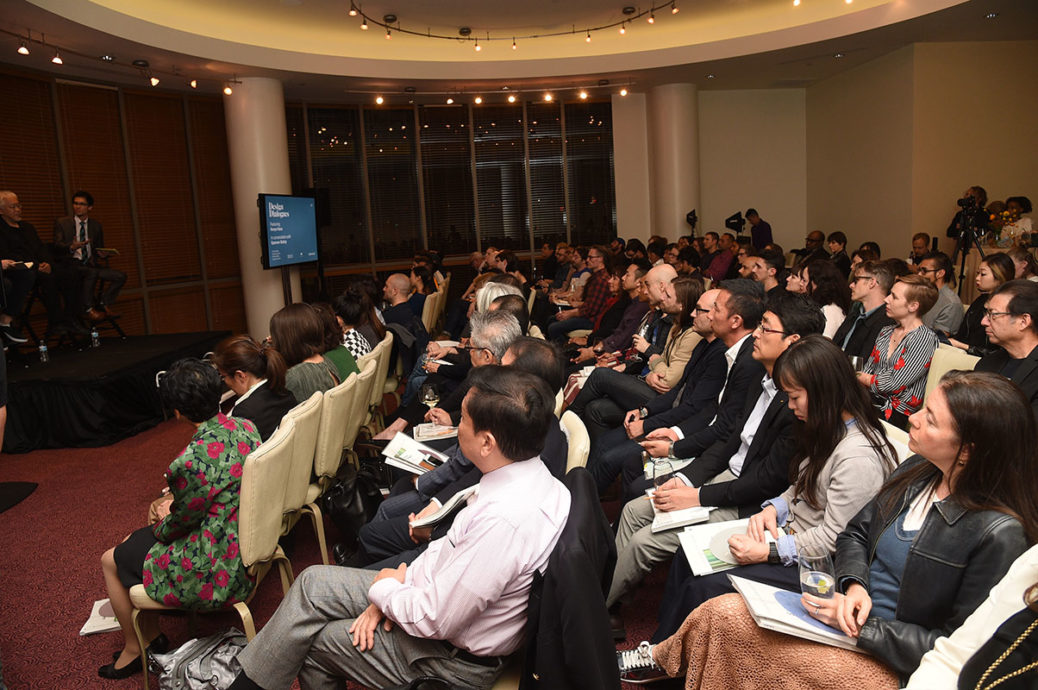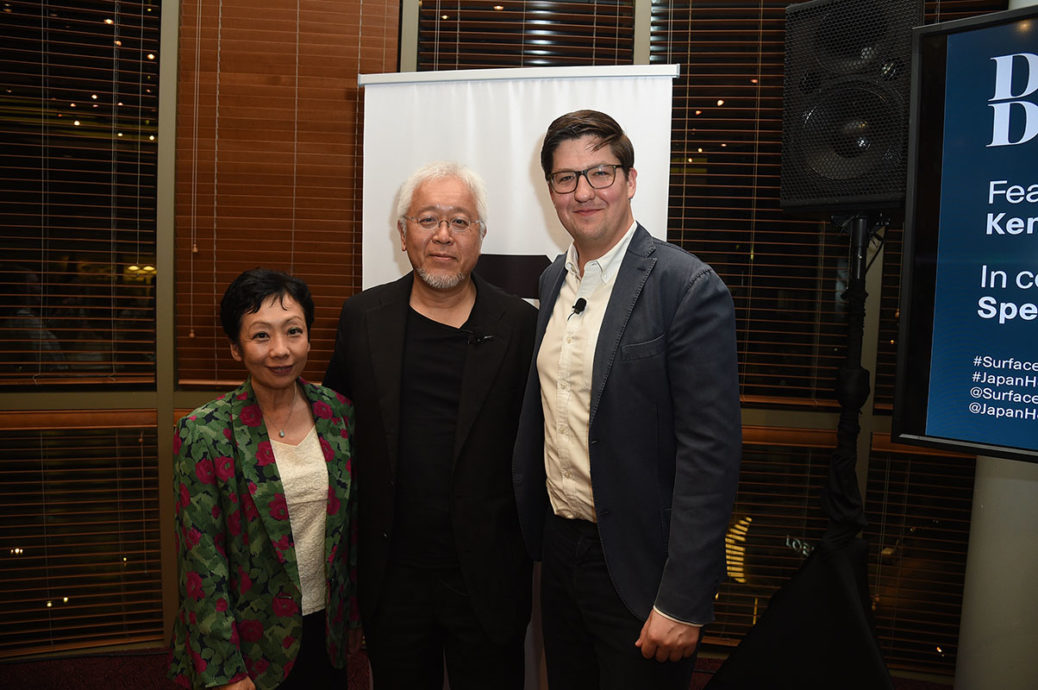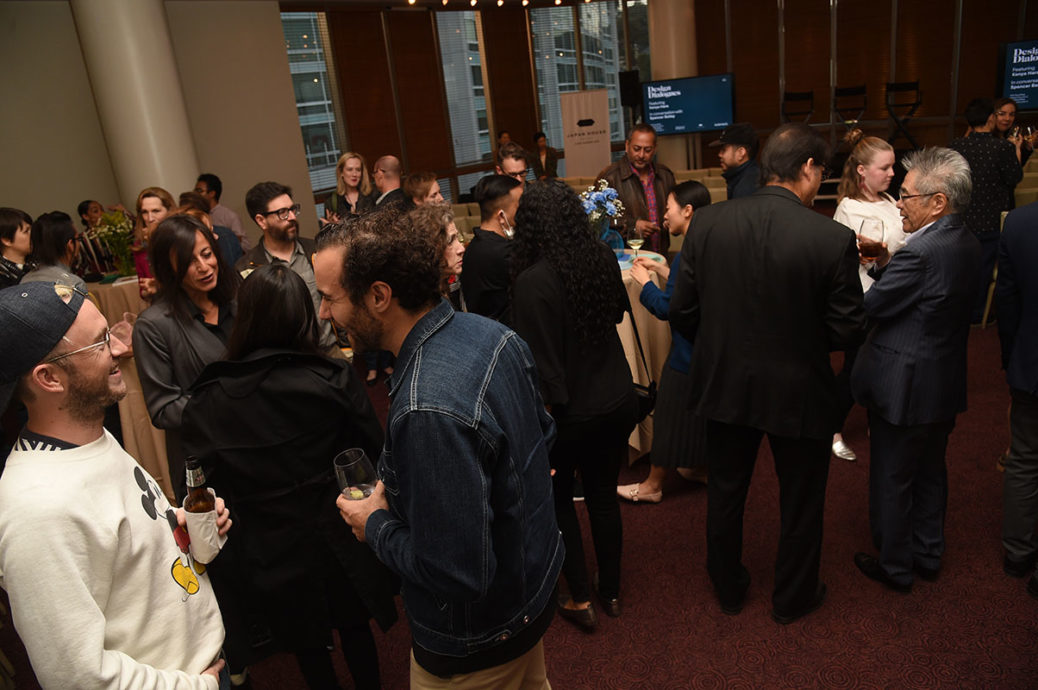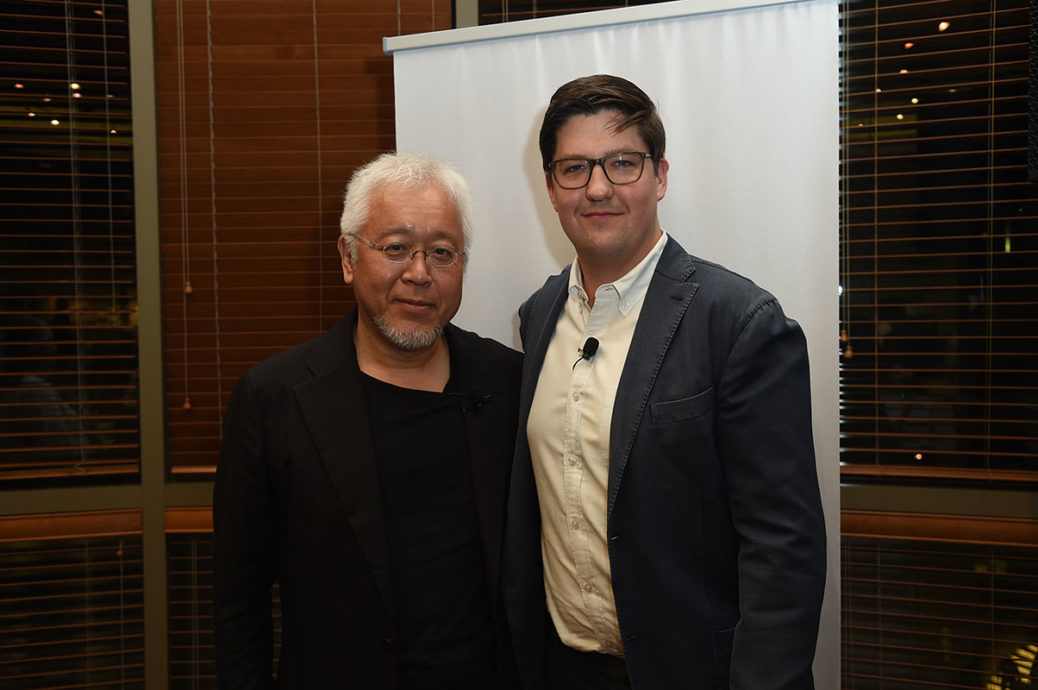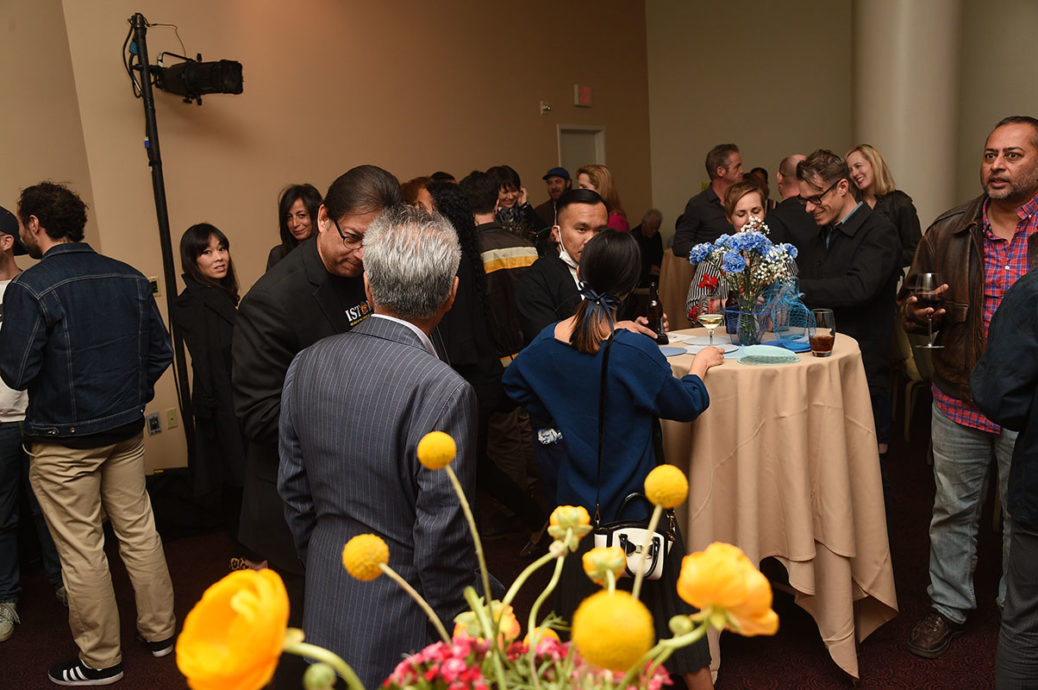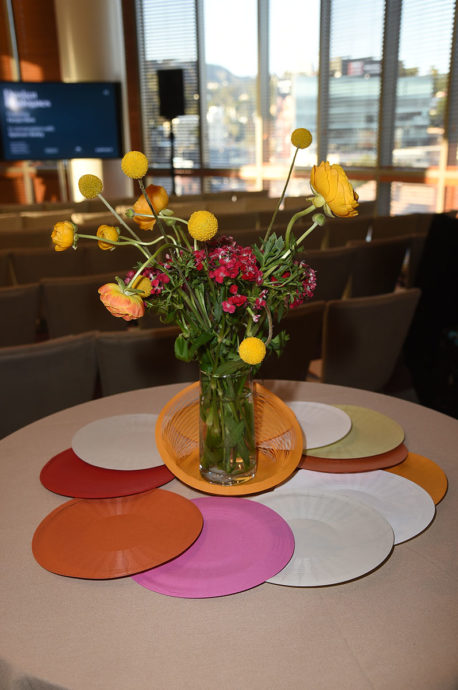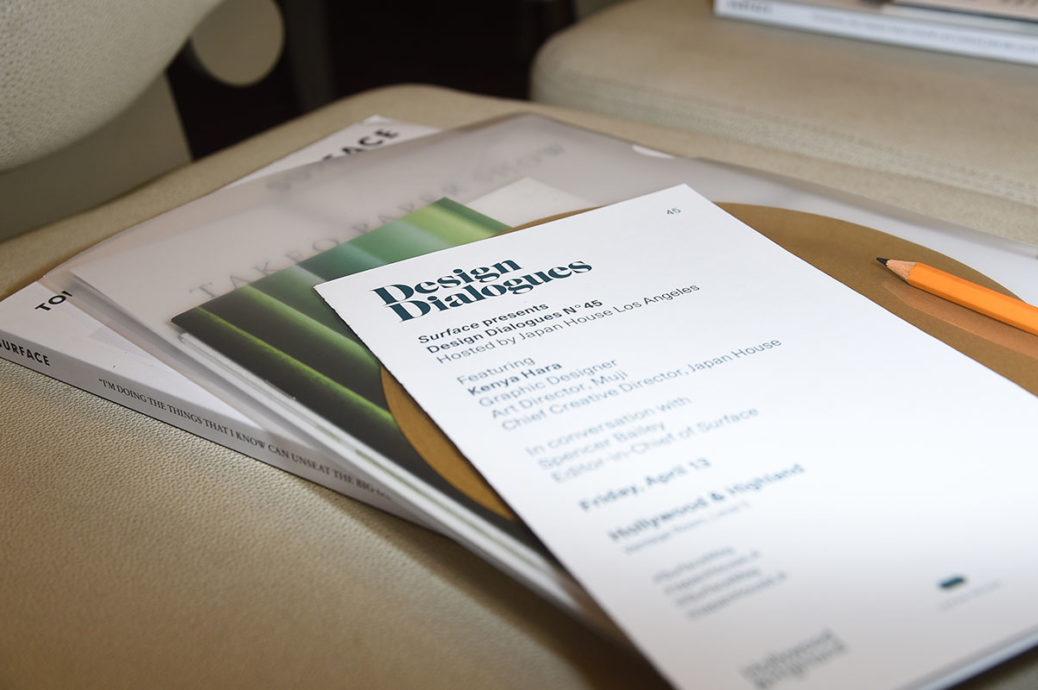On Apr. 13, Surface hosted the 45th installment of its Design Dialogues series, in partnership with Japan House Los Angeles. The conversation, which took place at Hollywood & Highland, featured Spencer Bailey, editor-in-chief of Surface, and Kenya Hara, art director of Muji and chief creative director of Japan House. The two spoke about Japan House Los Angeles’s latest exhibition, Takeo Paper Show: SUBTLE, and about how Hara drew his inspiration from Japanese cultural motifs such as simplicity, fragility, and purity, to inform how paper would be perceived and experienced by the exhibition’s audience.
Hara began the discussion by explaining how he purposefully sought out various creatives—such as architects, sculptors, and fashion designers—to collaborate on the exhibition, and gain their insight on its overall direction. “As a designer [myself], there are many angles I might not have even considered to take [with this show]. It was important [to me] that traditional designers brought in their take on what paper is,” he said.
“So, why paper?” Bailey inquired, as their discussion unfolded. “The idea of using something so fragile informs how one would need to behave in these spaces,” Hara responded. “Delicately, rather than violently—to be violent would completely disrupt the environment because [paper] is so delicate. In Japanese culture, everything is treated very subtly—you take your shoes off when you enter the home, for example—and so I wanted to capture that sense of culture within the exhibition itself.” Paper is omnipresent in Japanese culture—while most often used as a “method of communication, it is constantly found in common spaces such as in Japanese architecture, [everyday] objects, and even clothing,” Hara said.
Throughout the dialogue, Hara made two or three different analogies between eggs and design. After a few curious chuckles from the audience, Bailey finally asked: “What’s your fascination with eggs?” Hara, at first taken aback, erupted into laughter, and then explained, “I think the egg is a fascinating object from a design perspective. [When you cook] a hard-boiled egg, [at] what exact temperature is the shell going to come off perfectly? What are the [elements] that make the egg perfect?” Hara continued, “in this way, I think it’s a design object because it makes you think about what the exact amount of information, or stimulation, is needed to deliver the message that we [want to convey].” Hara had previously mentioned how white objects—such as paper and eggs—are “calming, make us focus, turn inward, [and give us] the ability to zero in on a concept. When you put salt on an egg—also a white object—the crystals are quite different [depending on] where you enjoy this geographically—for instance in L.A. versus in Japan,” he said. “Then, think about how many salt shakers are out in the world, and how they’ve been designed—[these details] are very important factors in how we experience things.”
From design, Bailey and Hara’s conversation transitioned toward the focus of innovative technology—particularly that of 3-D printers, and how Hara sees them potentially influencing his work. Hara, who hasn’t personally tried one yet, noted that “When I saw them hit the market in a big way, I didn’t think they were as impactful as people thought they would be.” He continued, “However, I do think it will open the door to new experiences. Architects who have used them in their designs have created shapes and experiences that I’ve never seen done before. It’s truly amazing.”
Learn more about the Takeo Paper Show: SUBTLE exhibition here.
Special thanks to Japan House Los Angeles and Hollywood & Highland.
(Photos: Josh Blanchard/Getty Images for Surface Media)
